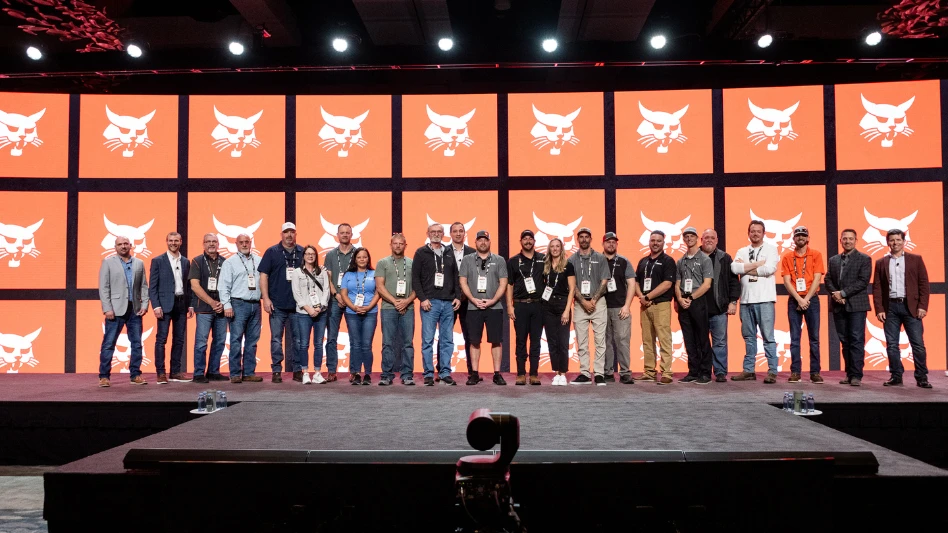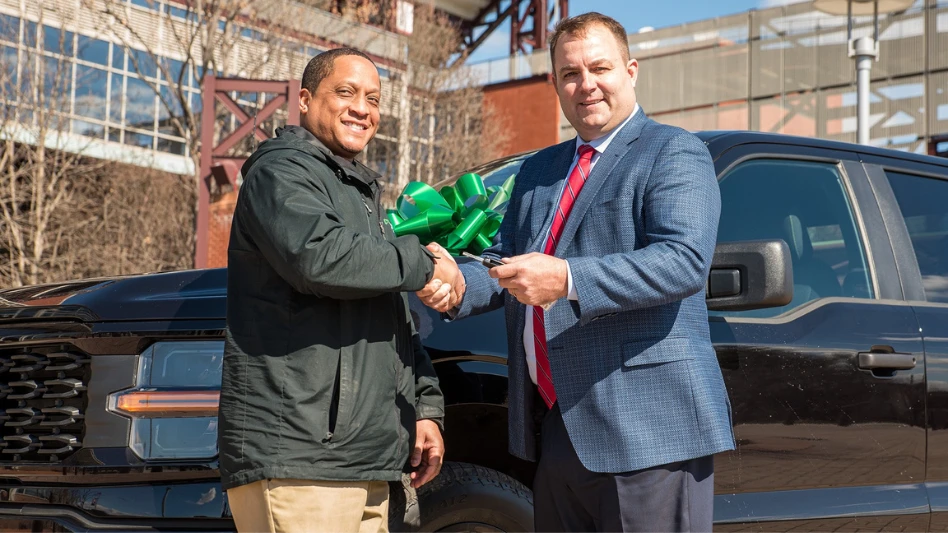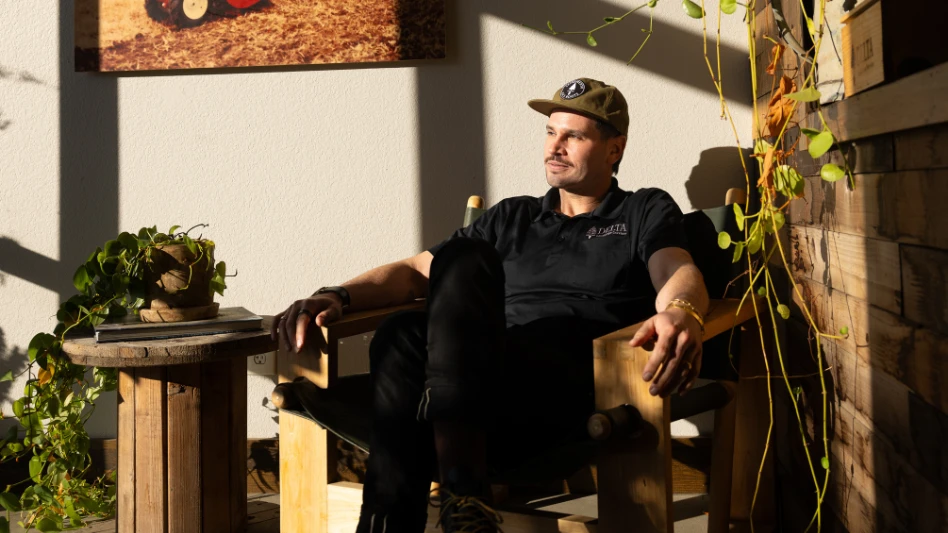As a full-service lawn and landscape company, contractors at SunCo Grounds Management in Omaha, Neb., “dabbled” in water feature installation before officially offering the service in the early 1990s. Until then, the lack of a good system made them difficult to install and even more difficult to maintain. “The filters and skimmers we have now just weren’t available,” says Mike Newcomer, landscape and water feature manager. “It was basically just a pump and a hose.”
With access to new and improved filtration systems in the mid-to-late 1990s, offering water feature installation was a more feasible task that produced better results, and the service “started snowballing” from there, Newcomer says. Today, water feature installation and maintenance comprises about 40 percent of SunCo’s annual revenue, Newcomer says. From creating designs to spring start-ups to installations to winterizations, the service keeps the company busy year-round.
When incorporating any new service, ensuring that it will be profitable is always a front-running factor. And while great construction and a large client base are important, sometimes it’s the little things a company can do, like care about the details and truly take pride in its work, that can keep customers coming back year after year.
TAKE ENOUGH TIME. While construction is often seen as the most important part of water feature installation, it is certainly not the only part. Clients expect more than just a rubber liner or a concrete fountain to fulfill their aquatic visions. “There’s basic construction, but then there’s the detail part of it,” says Tony Lobello, project manager for Mariani Landscape, Lake Bluff, Ill. “Sometimes I don’t think contractors factor in the finishing touches.”
Lobello says the final boulder placement, the type and placement of gravel, art work and sculptures, flowers and islands are the “frosting on the cake” beyond the shell of a great-looking water feature. An average-size pond measuring 10 by 15 feet can be installed by a productive, systematic crew in one or two days, says SunCo Grounds Management President Chris Andersen. Contractors should factor in an additional one or two days to place the extra touches, Lobello says.
Depending on size and complexity, contractors say that the price of water feature installations can range from $3,000 to $10,000 and even up to $50,000 if the client is willing to spend the money. The average 10-by-15-foot water feature with a pond and a waterfall costs around $5,000, Newcomer says. Inclusion of plants and fish as well as additional landscaping around the water feature can add another $3,000 to the final cost, Andersen says.
Hardy plants like water iris, blue pickerel, thin-leaf cattail, lily pads and water lilies are great for water features because they come back up every year and spread throughout the pond as they grow, Newcomer says.
Fish are other popular additions to water features and should be chosen with time and care. Newcomer suggests first asking clients questions about the wildlife that inhabits their area, as raccoons, birds and other “critters” have a tendency to prey on fish. Contractors at SunCo build fish caves made of 8-inch PVC pipe in all of their water features so fish have a place to go if they’re threatened. The most popular fish addition is koi because their main food source is algae, but goldfish, shibunken and even catfish are sometimes included as well, Newcomer says.
GET THE WORD OUT. Advertising and marketing are important for most companies to generate business, but advertising outside the box can often have huge benefits. SunCo has displayed its water features at an annual Omaha home show for the last 13 years and has found that to be a great way to land jobs and market their professional image.
SunCo’s design team treats each year’s home show as it would a client experience, designing a water feature specifically for the event. Like the features themselves, the company’s booths have become more elaborate over time – from 10-by-10 spaces to 40-by-40 foot spaces. Each year, SunCo’s crew puts in about 100 man-hours to create the $8,000 to $10,000 project, Andersen says. Pieces and parts of the feature are often reused for installations throughout the season, which can alleviate some of the initial cost.
As a full-service company, all of the division managers attend the home shows to promote the company’s other services like lawn care, irrigation and landscaping. But only the pond experts speak to attendees about their water feature installations to ensure they’re receiving accurate information. The first question the pond expert asks is if the potential client has a project in mind. “I’ve found it’s best to initially let the customer do most of the talking,” Newcomer says. “Get their information and a feel for what they’re looking for first and then let them know how you can give them what they want.”
About a week after the home show, a representative from SunCo will follow up with phone calls to interested attendees, and also will send them informational videos about the pond or pondless feature they’re interested in. To further sell the project, SunCo will offer a free consultation, and then, depending on the size of the potential project, charge $65 to $100 to create a design on paper.
This process generates significant revenue for SunCo, Newcomer says. From this year’s show alone, the company secured 10 water feature installations and 14 landscaping contracts – about $175,000 worth of work. “After this year’s home show, we’re booked through July,” he says.
SunCo will send potential clients tickets to the home show to try to get them to come out and see examples of their work. “Particularly in the wintertime when there are no water features up and running, it’s hard for people to visualize what we can do,” Newcomer says. “Sending them to a Web site or giving them photographs really don’t do the features justice.”
These invitees are often referred by the company’s existing client base or are people who have called to request information, he adds.
MAINTENANCE MATTERS. “Many contractors just do the installation and walk away from a potential relationship with a customer,” Newcomer says about water feature maintenance services. “But it’s a simple service to add and existing customers always upgrade after a few seasons.”
Lobello agrees that offering maintenance services can create continual profitability, as well as help keep the feature’s original design intact. However, if a company is going to offer maintenance, it’s important to do a thorough job in order for clients to be satisfied with their investments, he adds. “We’ve taken over jobsites previously maintained by other companies and found that the water feature didn’t meet the client’s expectations,” Lobello says. “If a water feature is poorly constructed and hard to maintain, people find it easier to just get rid of it.”
SunCo utilizes its maintenance services as a selling point when making a water feature installation sale, estimating for the client how much it will cost to maintain it each year. “We first give them an idea based on previous, similar jobs, but it can vary once we actually do it,” Newcomer says. “Also, as ponds progress with more plants or more fish, they take a little more time and care to maintain, so each year the price increases accordingly.”
Maintenance services include spring startups and winterizations. Spring startups involve removing the fish, cleaning the sides of the pond, adding new water and chemicals and generally freshening it up for the coming season. Winterizations involve draining most of the pond, shutting the system down and storing the pump during winter months. Prices for the services vary depending on the size and intricacy of the water feature, Newcomer says. For pondless features, spring startups usually cost around $150. For features with ponds measuring less than 11 by 15 feet, startups usually cost $150 to $200, and “normal-sized” ponds measuring 10 by 15 feet or 11 by 16 feet usually cost around $325 to start up, Newcomer says.
The cost of winterizations ranges from $45 to $95, depending on how long it takes and how much labor is involved. “Maintenance is a no-brainer when it comes to offering spring start-ups and winterizations,” Newcomer says.
While it can differ depending on the weather, most startups take place in March and early April, and winterizations are done in late fall. A variety of tools are needed to perform maintenance services, but most of them are “pretty primitive,” Newcomer says.
KNOW YOUR WORK. Most contractors agree that it pays to take pride in your work. By staying involved with each client’s feature, SunCo’s contractors are able to take care of questions and problems quickly and efficiently. “It seems like no matter how many years clients have water features they always ask the same questions, like how much product to put in, or what to do if the pump breaks. So it saves us time when our pond guys know their jobs like the back of their hands,” Newcomer says.
Contractors fill out forms about each water feature that include information such as the feature’s measurements, the types of plants and fish and the sizes of skimmers, hoses and pumps. This information is then stored in a computerized database, making each account easily accessible. “If a customer calls and says their pump stopped working, our secretary can pull up the information and relay the problem and the solution to us,” Newcomer says.
This also comes in handy during pond cleanouts. Every February a secretary will give each client a phone call, as well as send out letters, to remind them of their cleanout appointments and take preorders for any supplies they will need to get their features up and running. Clients who are involved with their features and know what and how much they need can place an order with the secretary, and those who don’t know can make an appointment for a contractor to come and survey the situation.
By allowing clients to preorder supplies, contractors will have the necessary fish food, light bulbs, algae and bacteria cleaner, and other products prior to arriving at the appointment, saving time and money. The preordering service and most of the supplies are free to the client, who is only charged for the algae and bacteria cleaner products. “We like to make sure pond cleanouts go as smoothly as possible,” Newcomer says. “And we always have extra stuff just in case.”
Most contractors agree that great design and construction is the first step toward a profitable water feature installation and a satisfying customer relationship. But, offering your clients little conveniences and extra services can also pay off in a big way.

Explore the June 2007 Issue
Check out more from this issue and find your next story to read.
Latest from Lawn & Landscape
- North by Northwest's charitable act for the Ronald McDonald House Charities
- Coxreels expands V-100 Series product line
- Landscape Workshop expands with 2 acquisitions
- Wilson360 adds Daniel Grange as new consultant
- Batman and business
- CH Products releases new tree stabilizer
- Savannah Bananas founder Jesse Cole to speak at Equip Exposition
- Catch up on last year's Benchmarking report





